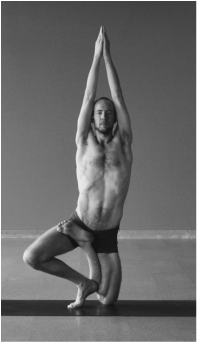|
A response to 6 Reasons You Should Stop Obsessing Over Alignment In Yoga Class by Maya Devi Georg.
1) Alignment Connects the Body and the Mind Before we can become connected to the community around us or to the divine, we must first become unified within ourselves. This is the first separation that Yoga (union) strives to overcome: the separation between the body and the mind. To connect the body and mind we must get them to work together, so we practice Asana. In Asana practice, alignment is simply the mind's way of understanding what happens naturally in the body. When we understand the body’s anatomy and the proper alignment of its parts, we strengthen the connection between the mind and the body. If we ignore anatomy and alignment and teach the student only to be comfortable, the separation between the body and mind will not be broken down. The separation will only be reinforced as the student avoids discomfort and does what makes them feel safe. 2) Alignment Is Necessary To Avoid Injury. If we understand anatomy and kinesiology, which deal with how the body is put together and how it works together, we have a much better chance of distinguishing between what is uncomfortable and what is damaging. There is a right way for our spines to curve when we stand, and there is a right way for our shoulders to move when we lift our arms. When we understand the body and its proper function, we can use it more effectively and more safely. Without a thorough knowledge of anatomy and alignment, how will we know when we, or a student, is doing a posture in a way that will hurt us/him/her? 3) Proper Alignment Will Take You Deeper, Safer When we put our bones, muscles and tissues where they were designed to be, and when we ask them to do what they were designed to do, it is remarkable how they accommodate us. When we align our bodies properly in the postures, the body and mind relax and our energy becomes unhindered. We end up being able to move deeper into the postures simply because we are using our body correctly. It may start out uncomfortably as the muscles try to do what they've never done, but when our body is in alignment, ease and steadiness appear. 4) Proper Alignment Will Allow You To Practice For Your Whole Life We can push ourselves into mis-aligned postures for a while, especially if we are young. Over time, a few years perhaps, this takes a significant toll on our joints and our connective tissue. Our tendons and ligaments will become strained, our joints will become loose and imbalanced. (Our muscles will probably be fine because they can heal so quickly.) Yoga can be a lifelong practice, not just acrobatics for the young. If we intend to practice into old age, we need our bodies to be strong and healthy. We cannot be pushing them in ways they were not meant to be pushed. We must learn how our bodies are designed and work with them using proper alignment. 5) No Two Bodies Are the Same, But They're All Similar We have physical differences, but we are mostly the same. We all have tibias and femurs that connect in a hinge at the knee. We all have vertebrae with discs in-between, muscles that wrap our shoulders, and muscles that run down our stomach. It is our job as teachers to recognize the diverse physicality of the students - where are they strong? where are they tight? - and modify the postures for their bodies. By teaching the students what is happening in their bodies, they can begin to connect with what they are feeling. When they understand both the intent of the posture and the unique limitations of their own bodies, they can modify the posture for themselves. Until then, it is up to us to uphold the integrity of the posture and adapt it to the student's unique body and mind. 6) We Need More Alignment, Not Less With so many bodily variables in mind, we need to consider alignment and anatomy even more deeply and with more complexity. We need to understand each different body and be able to respond to any limitation. While there may not be one single way to do a posture, ignoring anatomy and alignment is running away when we should be staying to fight. As teachers and as yogis we should understand the body, the mind, and the connection between the two with as much sophistication as possible. And we should pass that knowledge on. We must promote an expansion of knowledge instead of an abandonment of it.
1 Comment
|
This journal honors my ongoing experience with the practice, study and teaching of yoga.
My FavoritesPopular Posts1) Sridaiva Yoga: Good Intention But Imbalanced
2) Understanding Chair Posture 2) Why I Don't Use Sanskrit or Say Namaste 3) The Meaningless Drudgery of Physical Yoga 5) Beyond Bikram: Why This Is a Great Time For Ghosh Yoga Categories
All
Archives
November 2017
|


 RSS Feed
RSS Feed